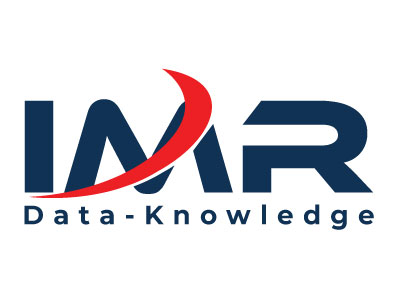VR Graphics Card Market Size, Share, Industry Analysis, Growth Estimates, Trends, Demand and Forecast 2022-2028

VR Graphics Card Market Scope & Overview: A variety of business prospects and expansion potential are covered in the market research study for the term. Executives receive a business plan from the market research that details market risks and constraints as well as the effects of various regulatory regimes. In addition to information specific to geography, applications, and types, the VR Graphics Card market research also provides information about each major company's market production, market share, revenue, and growth rate.
The research report discusses market revenue by region, market size, competitive positioning, regulatory policies, significant company profiles, and emerging technologies. The VR Graphics Card market research report also includes a qualitative and quantitative market analysis for the anticipated timeframe. This is done to assist businesses in meeting their primary goals and producing better decisions.
Get Sample Report of VR Graphics Card Market @ https://www.intelligencemarketreport.com/report-sample/806074
Competitive Analysis
The competitive analysis section of the global VR Graphics Card market provides details and insights on the participants. A market overview by business status, information on the competition, and revenue projections by region are just a few of the details provided. These businesses use a variety of tactics, such as product launches, partnerships, alliances, technological advancements, and contracts, to increase market revenue.
The research study includes profiles of leading companies operating in the global VR Graphics Card Market:
Market Segmentation Analysis
To provide readers with a comprehensive understanding of the industry, the study divides the VR Graphics Card market into segments based on platform, product, capacity, and geography. Based on observed and anticipated trends, research has been conducted on all of the target market segments. The global market is segmented into the four groups of company, product type, application, and geography. At this time, the main topics of in-depth segmental research are income and projections by region, type, and application.
Segment by Type
Segment by Application
Years considered for the study are as follows:
Historical year – 2019, 2020
Base year – 2021
Forecast period – 2022 to 2028
Do you have any specific query regarding this research? Ask Your Query @ https://www.intelligencemarketreport.com/send-an-enquiry/806074
COVID-19 Impact Analysis
In the first and second phase, the COVID-19 virus started to spread around the globe, infecting millions of people and causing major nations to implement work stoppages and foot restrictions. Almost every area of the economy, including the VR Graphics Card market, has suffered, with the exception of items used to provide life support and medical equipment.
Regional Outlook
Geographical segments that make up the VR Graphics Card market each have their own revenue, market share, sales, and growth rates. Some of the significant geographical areas covered in the market analysis include Europe, Asia-Pacific, Latin America, North America, and the Middle East and Africa.
Key Questions Answered by the VR Graphics Card Market Report
1. What is the market size and forecast of the Global VR Graphics Card Market?
2. What are the inhibiting factors and impact of COVID-19 shaping the Global VR Graphics Card Market during the forecast period?
3. Which are the products/segments/applications/areas to invest in over the forecast period in the Global VR Graphics Card Market?
4. What is the competitive strategic window for opportunities in the Global VR Graphics Card Market?
5. What are the technology trends and regulatory frameworks in the Global VR Graphics Card Market?
6. What is the market share of the leading vendors in the Global VR Graphics Card Market?
7. What modes and strategic moves are considered suitable for entering the Global VR Graphics Card Market?
Table of Content
1 Scope of the Report
2 Executive Summary
3 Global VR Graphics Card by Company
4 World Historic Review for VR Graphics Card by Geographic Region
5 Americas
6 APAC
7 Europe
8 Middle East & Africa
9 Market Drivers, Challenges and Trends
10 Manufacturing Cost Structure Analysis
11 Marketing, Distributors and Customer
12 World Forecast Review for VR Graphics Card by Geographic Region
13 Key Players Analysis
14 Research Findings and Conclusion
Conclusion
The VR Graphics Card market research report is built on first-hand information, qualitative and quantitative analysis by industry analysts, and comments from significant market participants and actors in the value chain.
Buy VR Graphics Card market Report@ https://www.intelligencemarketreport.com/checkout/806074
Contact Us:
Akash Anand
Head of Business Development & Strategy
sales@intelligencemarketreport.com
Phone: +44 20 8144 2758
Intelligence Market Report - Market Research Reports, Business Research Insights, Revenue Impact and Advisory Company
VR Graphics Card Market Overview , VR Graphics Card Market Drivers , VR Graphics Card Sales , VR Graphics Card Revenue , VR Graphics Card Market Share , VR Graphics Card Market Size
Nov 25, 2022